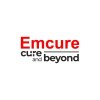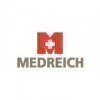Formulation Scientist
10+ Formulation Scientist Interview Questions and Answers

Asked in Emcure Pharmaceuticals

Q. To prepare a 10% coating solution of 100 grams, how much solvent is required?
To prepare a 10% coating solution of 100 gm, 90 gm of solvent will be required.
To prepare a 10% coating solution, the solvent will make up 90% of the total solution.
Therefore, for 100 gm of solution, 90 gm will be solvent and 10 gm will be the coating material.
The quantity of solvent needed will be 90 gm.

Asked in Dr. Reddy's

Q. Can you provide an example of using the QbD approach in product formulation or process development?
Qbd approach involves designing and developing a formulation and process based on quality attributes and risk assessment.
Qbd stands for Quality by Design
It involves identifying critical quality attributes (CQAs) and critical process parameters (CPPs)
Risk assessment is done to identify potential sources of variability and their impact on CQAs
Formulation and process are then designed and developed to ensure consistent quality
Example: Qbd approach for tablet formulation may invo...read more

Asked in Emcure Pharmaceuticals

Q. Have you worked on a product with elemental impurities? If yes, how did you resolve that issue?
Yes, I have worked on a product with elemental impurities and resolved the issue through thorough testing and analysis.
Identified potential sources of elemental impurities in the product
Conducted risk assessment to determine the impact on product quality and safety
Developed a strategy to control and monitor elemental impurities levels
Utilized analytical techniques such as ICP-MS to quantify elemental impurities
Implemented appropriate measures to mitigate the presence of eleme...read more

Asked in Aurobindo Pharma

Q. What are the steps involved in the formulation development of a generic product, from the initial stage to the final outcome, including potential questions that may arise during the process?
Formulation development involves systematic steps to create a generic product, ensuring efficacy and compliance.
1. Define product specifications: Determine the desired dosage form, strength, and release profile.
2. Conduct literature review: Analyze existing formulations and patents to identify potential challenges.
3. Select excipients: Choose suitable inactive ingredients that enhance stability and bioavailability.
4. Develop preliminary formulations: Create initial prototypes...read more

Asked in Emcure Pharmaceuticals

Q. Have you worked on a product containing Nitrosamine impurity?
Yes, I have worked on a product containing Nitrosamine impurity.
I have experience in identifying and quantifying Nitrosamine impurities in pharmaceutical formulations.
I have worked on developing strategies to minimize Nitrosamine impurities in drug products.
I am familiar with regulatory guidelines related to Nitrosamine impurities in pharmaceuticals.

Asked in Meyer Organics

Q. What excipients are required in OSD formulation? Name one of each.
Excipients required in OSD formulation include binders, disintegrants, lubricants, and fillers.
Binders help hold the tablet together, e.g. hydroxypropyl methylcellulose
Disintegrants help the tablet break down in the stomach, e.g. croscarmellose sodium
Lubricants prevent the tablet from sticking to the machinery, e.g. magnesium stearate
Fillers add bulk to the tablet, e.g. lactose monohydrate
Formulation Scientist Jobs




Asked in Emcure Pharmaceuticals

Q. Do you have any idea about nitrosamine impurity?
Nitrosamine impurities are a group of chemical compounds that can form during the manufacturing process of certain drugs and are considered potentially carcinogenic.
Nitrosamine impurities are a group of chemical compounds that can form during the manufacturing process of certain drugs.
They are considered potentially carcinogenic and are a cause for concern in the pharmaceutical industry.
Examples of nitrosamines include N-nitrosodimethylamine (NDMA) and N-nitrosodiethylamine (...read more
Asked in Slayback Pharma

Q. Iig limits and excipients used in developing and their nature
IIG limits and excipients are crucial in formulation development, ensuring safety and efficacy of the final product.
IIG limits refer to the Inactive Ingredient Guide limits set by FDA for excipients in drug products
Excipients are inert substances added to a drug to confer a suitable consistency, form, and appearance
Excipients can include fillers, binders, disintegrants, lubricants, preservatives, etc.
Examples of excipients: lactose, starch, cellulose, magnesium stearate, glyc...read more
Share interview questions and help millions of jobseekers 🌟

Asked in Slayback Pharma

Q. Tell me about the ICH stability guidelines.
ICH stability guidelines provide recommendations for conducting stability studies on pharmaceutical products.
ICH stands for International Council for Harmonisation of Technical Requirements for Pharmaceuticals for Human Use
Guidelines outline requirements for stability testing, storage conditions, and data analysis
There are different types of stability testing including long-term, accelerated, and intermediate
Stability data is used to determine shelf life and storage condition...read more

Asked in Emcure Pharmaceuticals

Q. Describe the drug development process.
Drug development process involves discovery, preclinical testing, clinical trials, regulatory approval, and post-market surveillance.
Discovery phase involves identifying potential drug candidates through research and testing.
Preclinical testing assesses the safety and efficacy of the drug in animals before human trials.
Clinical trials involve testing the drug in humans to determine safety, dosage, and effectiveness.
Regulatory approval is obtained from agencies like FDA before...read more
Asked in Slayback Pharma

Q. What challenges have you faced during development?
Challenges faced during development include formulation stability, scalability, and regulatory compliance.
Formulation stability: Ensuring the product remains stable over time and under various conditions.
Scalability: Adapting the formulation for large-scale production without compromising quality.
Regulatory compliance: Meeting the strict regulations and guidelines set by authorities.
Cost constraints: Developing cost-effective formulations without compromising efficacy.
Ingredi...read more

Asked in Dr. Reddy's

Q. Selection of excipients
Excipients are selected based on their compatibility with the active ingredient, intended dosage form, and regulatory requirements.
Consider the intended dosage form (e.g. tablet, capsule, injection) and the properties required for that form (e.g. flowability, compressibility, solubility)
Evaluate the compatibility of excipients with the active ingredient and other excipients in the formulation
Ensure regulatory compliance with guidelines such as the International Conference on ...read more

Asked in Lupin

Q. Principle of the instruments
Principle of the instruments refers to the underlying theory or mechanism by which the instruments operate.
Instruments work based on specific scientific principles or laws
Understanding the principle helps in troubleshooting and optimizing instrument performance
Examples include spectrophotometry (based on Beer-Lambert law) and chromatography (based on differential partitioning)
Interview Questions of Similar Designations
Interview Experiences of Popular Companies






Calculate your in-hand salary
Confused about how your in-hand salary is calculated? Enter your annual salary (CTC) and get your in-hand salary


Reviews
Interviews
Salaries
Users










